Categories
- SWATCHES
- SHEETS
- PRE-NIPPED Crystal Glass
- MIXED-MEDIA Bags
- TILES : Ceramic/Porcelain
- INSERTS and EMBELISHMENTS
- KITS
- TOOLS, GLUE, MESH
- GROUT
- BASES
- PATTERNS and E-BOOKS
Specials
-

HEART - RED NO FRAME
R26.00 (-50%) R13.00
MOSAIC INFO:
- What is Mosaic?
- Mosaic Design
- Common Mosaic Mistakes
- Things to Consider
- Mosaic Colour Basics
- Mosaic Materials
- Mosaic Surfaces & Adhesives
- Transferring Mosaic Patterns
- Cutting Tools
- Cutting Techniques
- The Indirect Mosaic Method
- Pique Assiette Method
- Choosing Grout Colour
- How to Grout your Mosaic
- Side Finishing Options
Search
MOSAIC DESIGN
A number of extra factors affect the overall appearance of a mosaic besides the choice of materials and colour, these include:
- the size and shapes of the pieces
- the size of the interstices (the gaps or "grouting joints" between pieces)
- the colour of the grout
On top of this, the way the pieces and grouting joints are aligned can be used to give a visual "flow" to the mosaic. This flow is called "andamento" and can be used in a number of ways and combinations of techniques. These have different names to describe the kind of work ("opus") involved. (There is sometimes some overlap in the way these terms are used.)
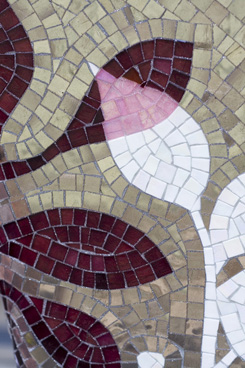
opus vermiculatum
This gets its name from the Latin for 'worm' and refers to lines of tesserae (tile) that snake around a feature in the mosaic. (see example on the right). Often two or three rows of opus vermiculatum appear like a halo around something in a mosaic picture, helping it stand out from the background.
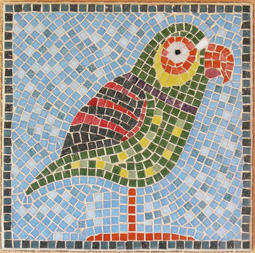
opus musivicum
This is an effect rather like ripples on a pond, with repeated rows of tesserae which spread out to fill a background, as in the background to this bird tile. This gives the piece a sense of movement.
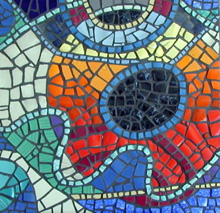
opus palladinium
A "crazy pavement" effect, with a random appearance. This is used a lot in more modern works. An example is the work below by abstract artist Sheila Hudson. When using this technique it is especially important to keep the gaps between the tiles (interstaces) as regular as possible to balance the design.
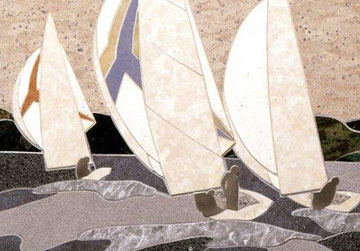
opus sectile
This is a technique where, instead of being made up of lots of individual tesserae, shapes in a picture are made from larger, specially cut, pieces (perhaps of tile or stone).
On the left is an excellent example of this by Diedre Hjelle.
opus regulatum
As the name suggests, this is a very regular pattern, like bricks in a wall, or squares on a chess board. The example on the left is a abstract design using this technique and the picture on the right was taken at Tottenham Court tube station and shows this technique used for the background. This was used a lot by the Romans.
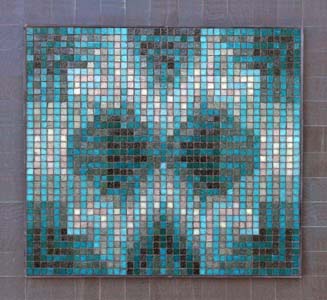
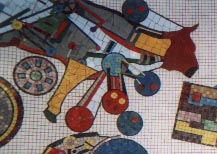
As above, this combining of another technique with opus regulatum is also known as opus classicum (although usually combined with opus vermiculatum) creates a very strong, clear image.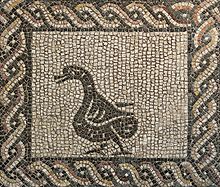
opus tessellatum
This technique is also usually used for backgrounds and consists of horizontally or vertically arranged lines like a brick wall pattern (not both - this would be opus regulatum). The image of a Roman mosaic on the right shows this technique used vertically. When using this technique make sure that none of the tesserae line up across adjacent rows as this will catch the eye and draw attention.
No matter what techniques you use - alone or in combination - feel free to experiment and the important bit is to have fun, love what you're doing and create a piece that will give pleasure for many years!
Cart
New products
No new products at this time

